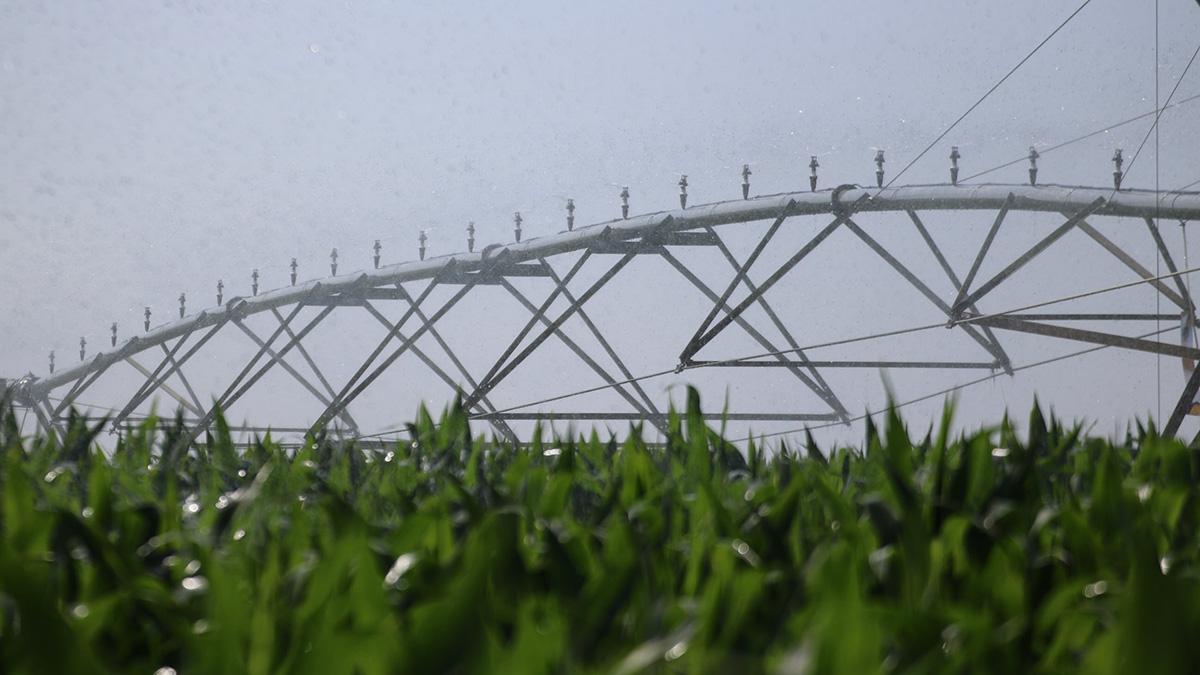realagstock.com
Webinar
Land Values and Cash Rents: 2023 Nebraska Farm Real Estate Update
July 13 at noon Central time
This webinar will cover findings from the newly published final edition of the 2023 Nebraska Farm Real Estate Market Survey report, including average reported land values and cash rental rates for different classes and types of agricultural land across the state. It will cover the factors influencing current trends and offer the attendees the chance to have their questions answered.
RegisterThe average value of agricultural land in Nebraska increased for the fourth consecutive year, to $3,385 per acre, according to the final 2022-2023 Nebraska Farm Real Estate Market Highlights report, published by the Center for Agricultural Profitability at the University of Nebraska-Lincoln. This represents an increase of about 14% ($475 per acre) from the previous year's value of $3,360 per acre.
The northeast, east, and southeast districts led the state, with rates of increase from about 15% to 17%. Western regions of Nebraska reported smaller increases, ranging from approximately 10% to 13%.

The report highlights various economic forces affecting land values across the state. Major contributors to the higher value of land include current crop prices, farm expansion and non-farmer investor interest in land purchases. However, some economic forces were reported to negatively impact farm real estate values, such as current interest rate levels, property tax levels, farm input expenses and future property tax policies.
“Rising interest rates were implemented to combat inflation but concerns about rising expenses saw many operations acquiring tangible assets to hedge their purchasing power,” said Jim Jansen, an agricultural economist and co-author of the report.
“Operators and investors use land purchases to hedge against inflation and grow farms or ranches,” Jansen said. “Higher interest rates may impact agricultural real estate markets without additional profitability to offset the rising financing expense.”
In terms of overall value, Nebraska's total value of agricultural land and buildings rose to approximately $191.8 billion, a significant increase of about $23.8 billion from 2022 to 2023.
The report details average values and changes in specific types of land by region. Statewide gravity- and center-pivot-irrigated cropland averaged $7,905 and $8,760 per acre, respectively, showing annual increases of 12% and 13%. The market value for hayland, the highest earner out of the eight land classes, saw an increase of 17% in the statewide average.
Higher grain and livestock prices have improved many operations' financial positions across Nebraska, even as the state grapples with drought conditions. The report indicates that rising interest rates have led to future uncertainty regarding the market value of land, with rising financing expenses on long-term debt.
In addition to land values, the report published average cash rental rates by region and land class. Overall, rental rates were steady to slightly higher across Nebraska in 2023, with dryland and irrigated cropland rates trending upward. Cow-calf and stocker monthly rental rates also trended steady to higher across the state.
According to Jansen, the productivity of rented cropland, including the type of soil, expected rainfall, and local market competitiveness, all contribute to regional cash rental rates.
“Uncertainty in drought and commodity prices creates additional risk in land leases,” he said. “Flex lease arrangements, where the base cash rental rate can flex based upon actual crop yields, prices, or a combination of the two, may allow for better risk mitigation with cash rents in 2023.”
Overall, the report documents rising agricultural land across Nebraska in 2023, but economic forces such as current interest rates, property tax levels, farm input costs and future property tax policies could potentially impact farm real estate in the future.
The Nebraska Farm Real Estate Market Highlights report is the final product of an annual survey of land professionals, including appraisers, farm and ranch managers and agricultural bankers. Land values and rental rates presented in the report are averages of survey participants’ responses by district and reflect point-in-time estimates as of Feb. 1, 2023. Actual land values and rental rates may vary depending on the quality of the parcel and local market for an area.
A webinar covering the report and updated land values and cash rental rates will be hosted by Jansen at noon Central time on July 13. Registration is open here.
The full report is available on the Center for Agricultural Profitability’s website, https://cap.unl.edu/realestate.
